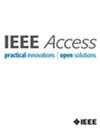电动汽车用单电池源和高频链路的多电平逆变器
IF 3.4
3区 计算机科学
Q2 COMPUTER SCIENCE, INFORMATION SYSTEMS
引用次数: 0
摘要
由不对称直流电压源馈电的级联h桥的多电平逆变器拓扑比对称逆变器具有更高的输出电压电平,是电动汽车的首选。然而,这些转换器很难集成到电动汽车中,因为该系统需要大量的隔离直流电源。本研究提出了一种新的多电平逆变器驱动拓扑,该拓扑由单个电池供电,并使用小型,经济实惠的高频链路(HFL)在h桥上产生隔离的直流电源。HFL由一个单输入多输出(SIMO)反激变换器和一个双向DC-DC (BDC)变换器组成,可以实现有限电平的动态电压控制。本研究主要针对具有直流交叉调节链路的27电平变频感应电机驱动。此外,所提出的多级驱动系统可以通过级联h桥变换器的三电平整流操作,实现电池从电机到再生充电的平稳过渡。混合最接近电平控制(HNLC)调制方案部署在所提出的驱动器中,以控制逆变器电压在大范围的速度变化,而不影响电压电平的数量。利用MATLAB/Simulink对所提出的拓扑结构进行了仿真,并通过硬件实验进行了验证。本文章由计算机程序翻译,如有差异,请以英文原文为准。
A Multilevel Inverter With a Single Battery Source and a High-Frequency Link for Electric Vehicles
Multilevel inverter topologies with cascaded H-bridges fed by asymmetrical direct-current (DC) voltage sources have higher output voltage levels than symmetrical ones and are preferred in electric vehicles (EVs). However, these converters are difficult to incorporate in electric vehicles because the system requires a significant number of isolated DC supplies. This study presents a novel multilevel inverter drive topology, which is powered by a single battery source and uses a small, affordable high-frequency link (HFL) to generate isolated DC sources across H-bridges. The HFL consists of a Single-Input Multiple-Output (SIMO) flyback converter and a Bidirectional DC-DC (BDC) converter, which enables dynamic voltage control with a finite number of levels. This study focuses on a 27-level inverter fed induction motor drive with a cross-regulated DC link. In addition, the proposed multilevel drive system enables a smooth transition from motoring to regenerative charging of the battery with three-level rectifier operation of the cascaded H-bridge converter. The hybrid nearest level control (HNLC) modulation scheme is deployed in the proposed drive to control the inverter voltage over a wide range of speed variations without compromising the number of voltage levels. The proposed topology was simulated using MATLAB/Simulink and validated using hardware experiments.
求助全文
通过发布文献求助,成功后即可免费获取论文全文。
去求助
来源期刊

IEEE Access
COMPUTER SCIENCE, INFORMATION SYSTEMSENGIN-ENGINEERING, ELECTRICAL & ELECTRONIC
CiteScore
9.80
自引率
7.70%
发文量
6673
审稿时长
6 weeks
期刊介绍:
IEEE Access® is a multidisciplinary, open access (OA), applications-oriented, all-electronic archival journal that continuously presents the results of original research or development across all of IEEE''s fields of interest.
IEEE Access will publish articles that are of high interest to readers, original, technically correct, and clearly presented. Supported by author publication charges (APC), its hallmarks are a rapid peer review and publication process with open access to all readers. Unlike IEEE''s traditional Transactions or Journals, reviews are "binary", in that reviewers will either Accept or Reject an article in the form it is submitted in order to achieve rapid turnaround. Especially encouraged are submissions on:
Multidisciplinary topics, or applications-oriented articles and negative results that do not fit within the scope of IEEE''s traditional journals.
Practical articles discussing new experiments or measurement techniques, interesting solutions to engineering.
Development of new or improved fabrication or manufacturing techniques.
Reviews or survey articles of new or evolving fields oriented to assist others in understanding the new area.
 求助内容:
求助内容: 应助结果提醒方式:
应助结果提醒方式:


